Herons - Ambassadors of Iowa Rivers
Story and photos of long beaks, stick legs, and stealth along the water
A great blue heron is the color of gray mist reflecting in blue water. And like mist, she can fade into the backdrop, all of her disappearing except the concentric circles of her lock-and-load eyes. She is a patient, solitary hunter, standing alone as long as it takes to snatch her prey. Or, eyeing her catch, she will stride forward one slow step at a time, like a predaceous bridesmaid.”
― Delia Owens, Where the Crawdads Sing
Heron Creek
The wildness of Iowa often is associated with its many rivers and streams. Indeed, Iowa is among the nation’s most river-strewn states, with more than 70,000 miles of waterways. These rivers, streams, and creeks have many intriguing names, often taken from Native cultures, physical characteristics, historical events, places, plants, and wildlife. Among animals thus honored are otter, raccoon, bear, buffalo, deer (buck), beaver, catfish, trout, elk, fox, turkey, lizard, badger, bass, bobwhite, crane, pickerel, pike, mink, eagle, and even skunk and mosquito. However, arguably the most visible and charismatic river residents remain anonymous in this nomenclature. If there comes a time to nominate a new Iowa waterway (and there are numerous yet unnamed creeks in this state) – I nominate Heron Creek.
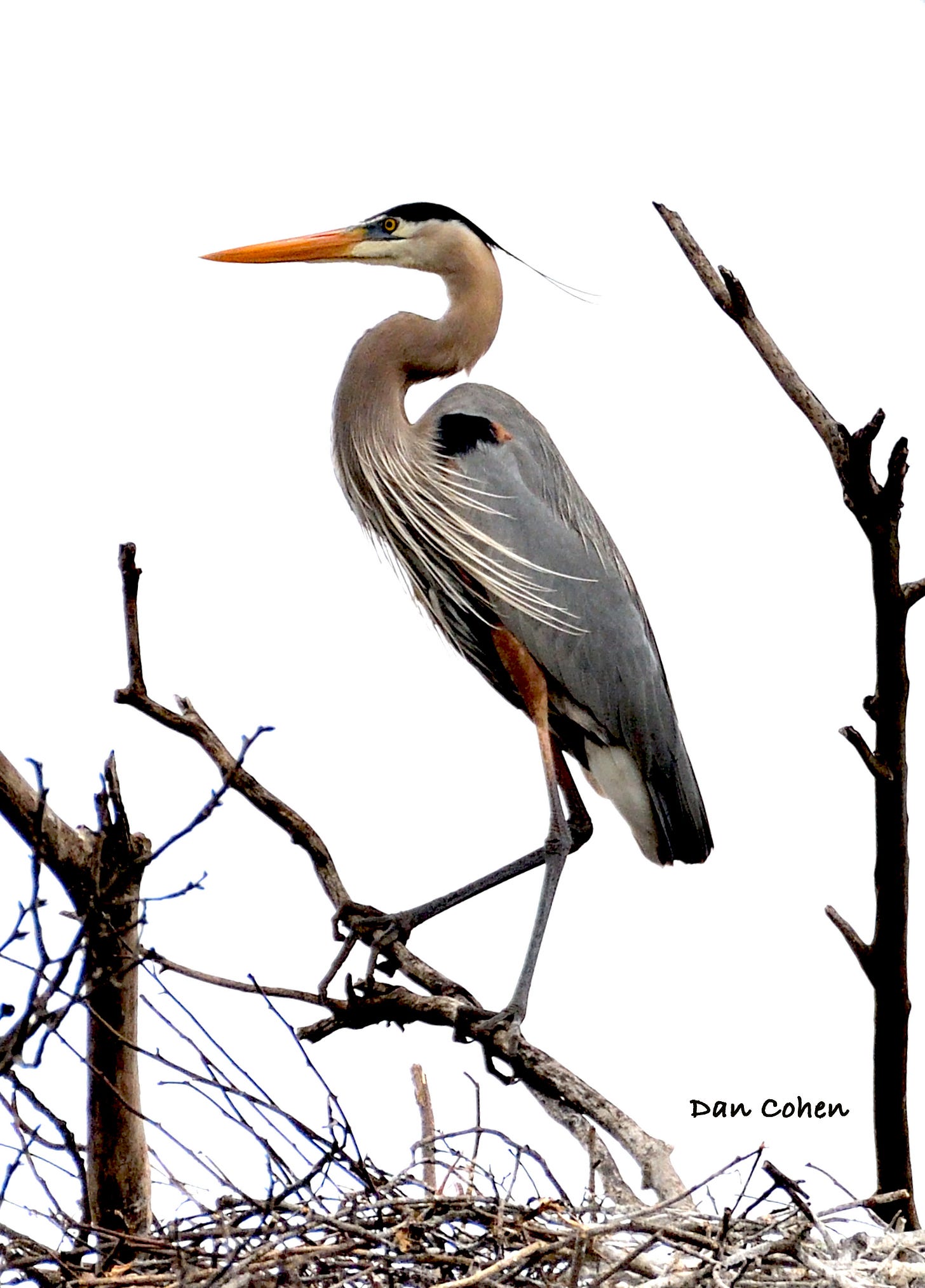
Heron Creek would honor the great blue heron - stalker of shallows; the lazy, crook-necked pilot of the shoreline; the source of the raspy croak heard from around unseen bends; and the silly spectacle of a bulky body landing atop tree branches on stick legs. Heron Creek would meander within a wooded corridor, with prerequisite backwaters, chalk full of small fish, frogs, and other savory heron delights.
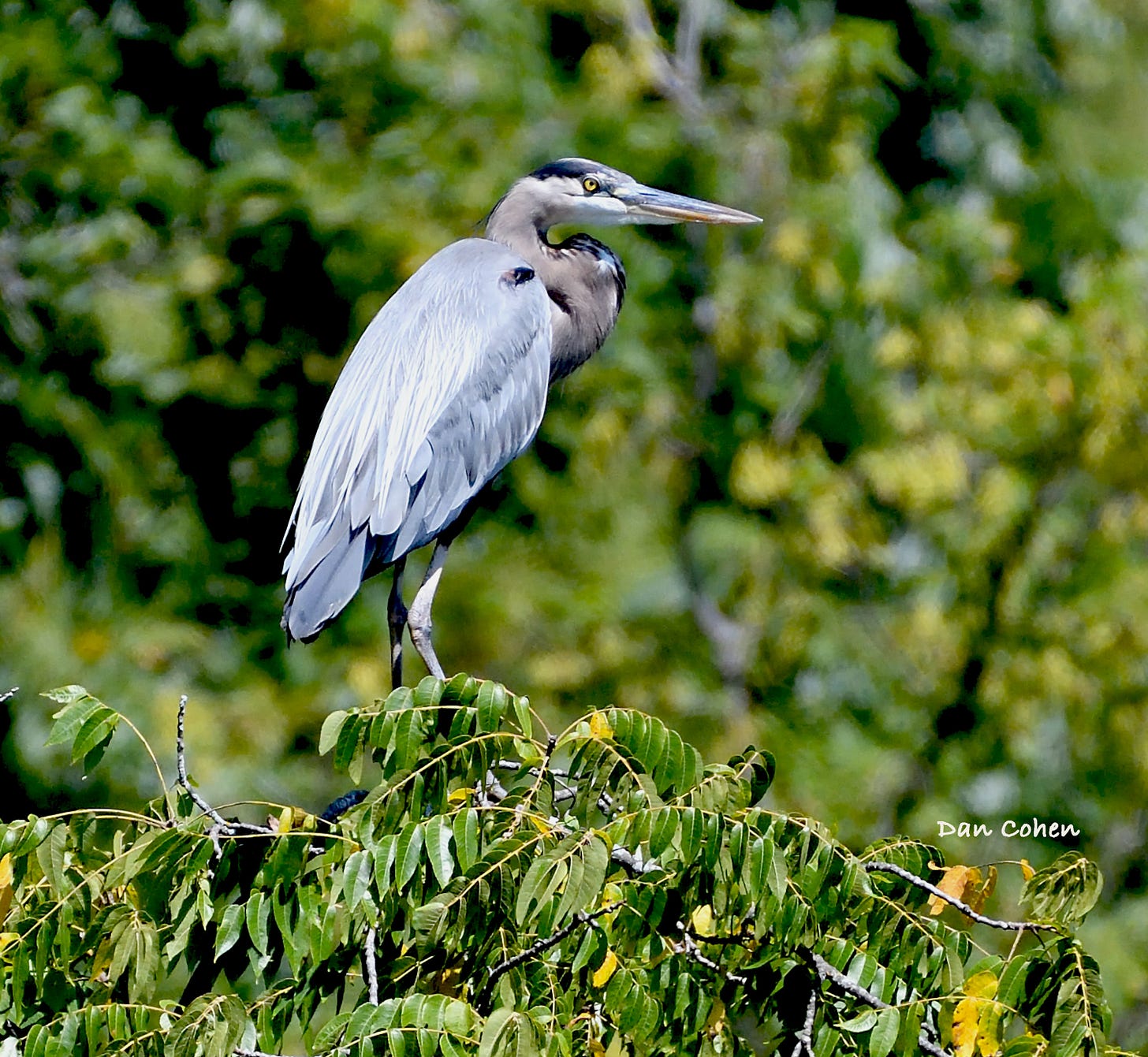
Heron Creek should be of size and conditions to accommodate a canoe or kayak, because such birds and boats travel at similar speeds and styles. Both move about as part of the coursing water. They accompany one another, at times playing hide-and-seek as they leisurely move downstream. As herons apply stealth and long necks with sharp beaks to snatch or impale their prey, paddlers may apply rods and reels to capture their quarry. Both seek a “no frills” experience on the river – quiet followers of the shoreline.
Great blue herons
Great blue herons serve as ever-present ambassadors of Iowa’s waterways. Those who spend a lot of time on or near moving waters know this bird as Ol’ Cranky, Big Cranky, Long John, Big Blue, or Poor Joe. Like moving water, the beauty of a great blue heron changes in its various positions, lighting, and individual characteristics. They have remarkable texture, with smooth, sleek feathers underlying head plumes and unruly long feather tufts along the neck and breast. Colors vary in earth tones of grey, blue, black, steel, and white - always with a long, yellow-orange beak (juvenile great blue herons lack some of the color and frills of adult birds during their first year). Long stick legs can appear delicate, graceful, statuesque, or clumsy, depending on a bird’s activity.
Many people come to know great blue herons as birds of shorelines and sandbars – standing still as stone, stalking the river’s edge or flying off around a bend – wings slowly flapping and a neck curved in a unique “s” shape. However, the large birds also scout the river from above while comfortably perched in treetops, and venture into backwater wetlands.
Great blue herons are colonial nesters, with numerous birds building nests in what is called a rookery or heronry. These nesting sites often are located miles from the birds’ waterway hunting grounds. A heronry usually consists of dozens of nests in which birds lay and incubate their eggs and raise their young. The large birds, often 3-4 feet tall with 6-foot wingspans, land on flimsy branches to tend spindly nests of loose sticks. Long legs, perfect for wading in the shallows of rivers and wetlands, appear clumsy and ridiculous when negotiating a landing on twisted branches and twigs.
Several types of herons are seen or heard on summer days in Iowa, with the most common species being great blue herons, green herons, great egrets, snowy egrets, and black-crowned night-herons.
Green herons
Green herons are plucky little cousins of great blues, seen flying among shoreline branches and prowling along shallow waters. They are likely to be seen on many stretches of Iowa rivers, and are next in line to take over duties as ambassador for Heron Creek. A green heron will occasionally emerge from a camouflaged perching place to suddenly fill a spotlight with a blaze of color.

Adult birds have blue-green backs and tops of heads; rusty red to chestnut necks and breasts; yellow legs; and a dagger-like beak. They appear stocky with their necks tucked in low, but nearly double their length when extending their necks. Upon landing, or when aroused, crown feathers may spike up to form a crest, like a punk mohawk, then lay flat and sleek as the bird settles itself. Taken together – crest feathers, neck and body posture, and changes in lighting - green herons present many different looks. In late summer, juvenile birds with streaked necks and breast add to the diverse appearances.
Green herons spear or grab their prey with lightning quick movements of their sharp beaks. They are known to flick lures into the water - pieces of leaves, sticks or other debris - to attract small fish and other prey.
Herons are on display along Iowa’s waters from April through October. They likely will be a part of your next trip downriver. Although you will not find a Heron Creek in Iowa, all our creeks and streams consist partly of herons. They are integral of the river experience - as much a part of the river as the water, fish, and sandbars.
More herons in photos
Below are a few photos from heron-watching last February in Florida. Little blue herons, snowy egrets, and cattle egrets are rarely seen in Iowa. Other North American heron species not pictured include reddish egret, black-crowned night-heron, and yellow-crowned night-heron.
Nature Communications - Dan’s Substack is a reader-supported publication. You can subscribe for free, or you can support this work by choosing to be a paid subscriber.




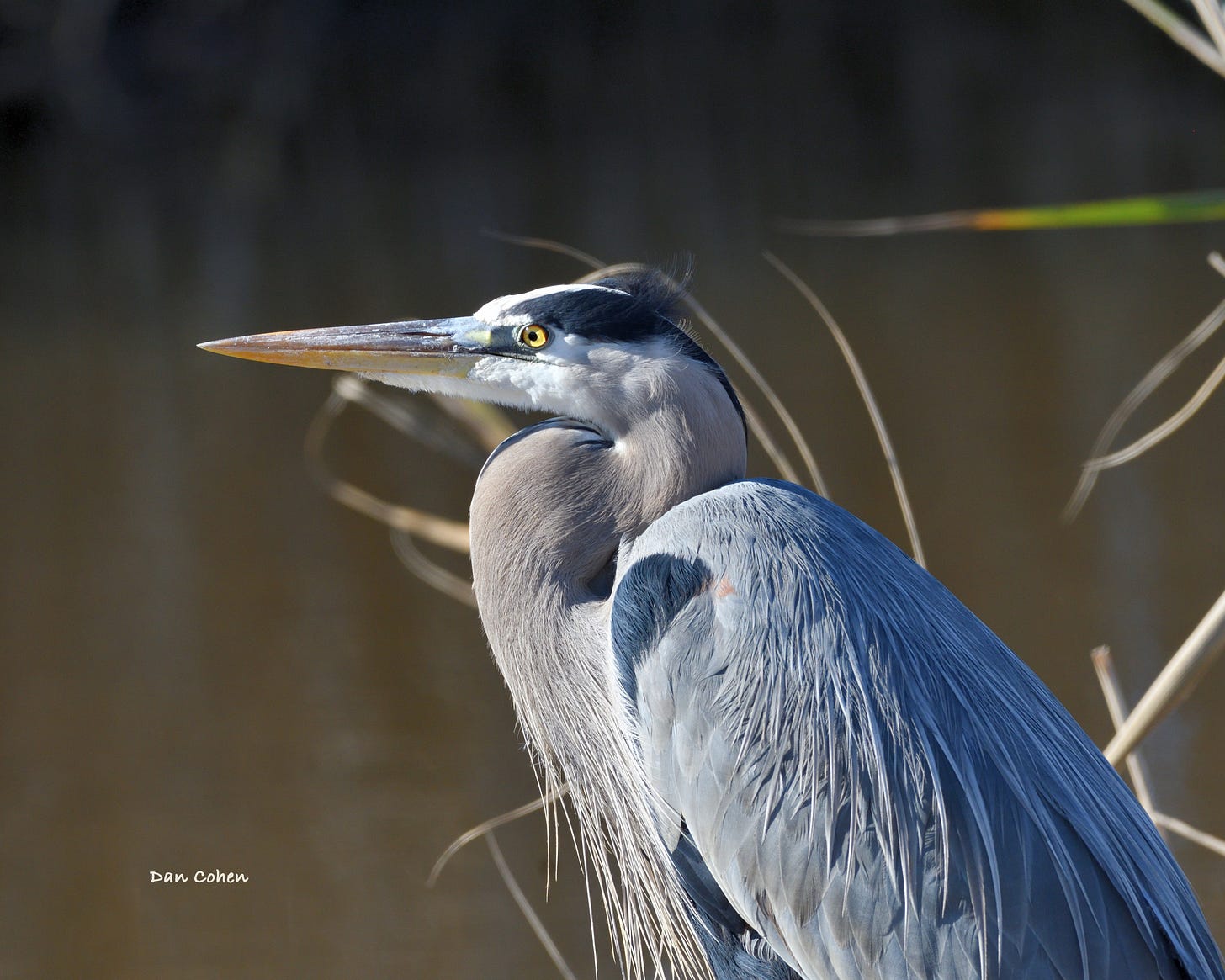

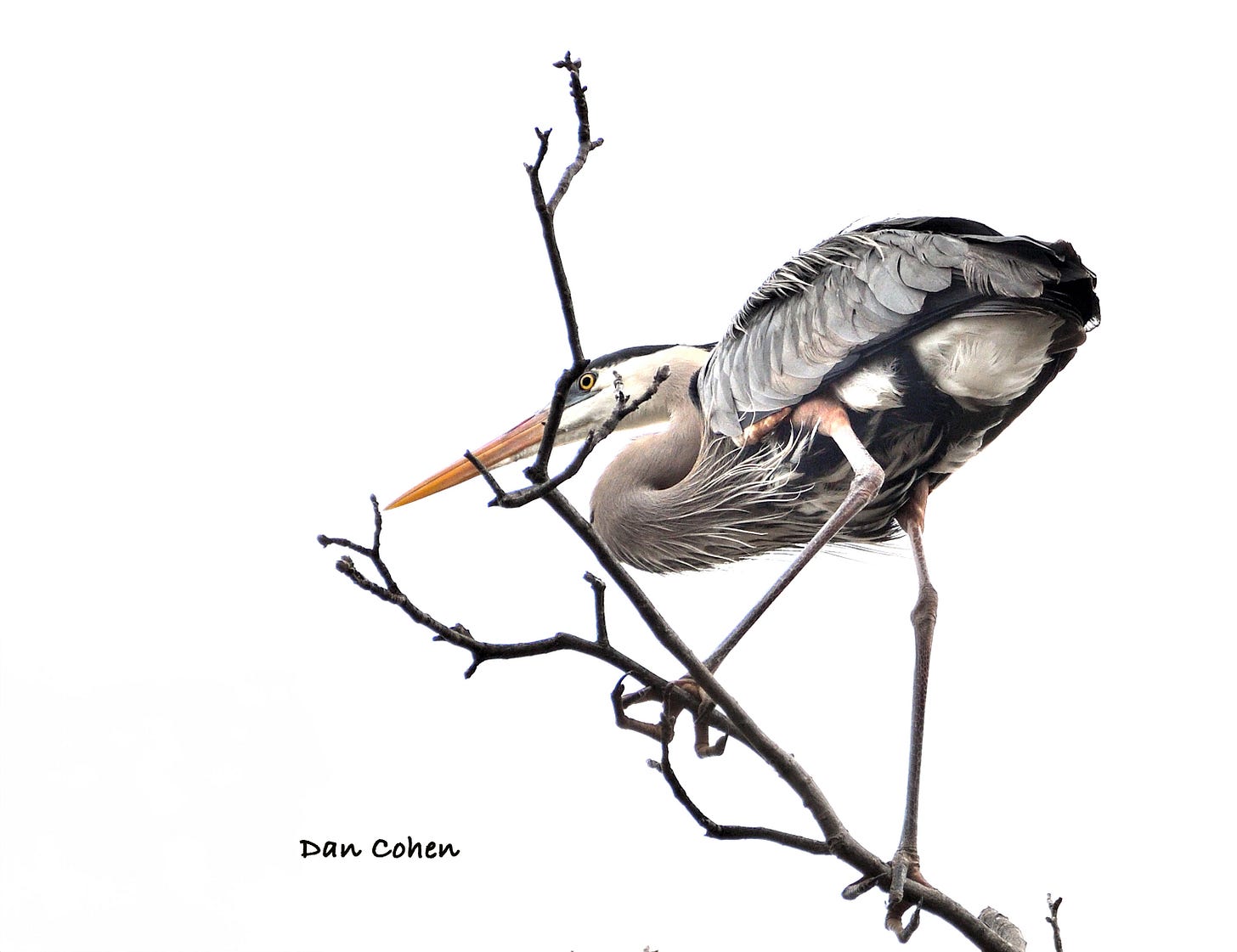

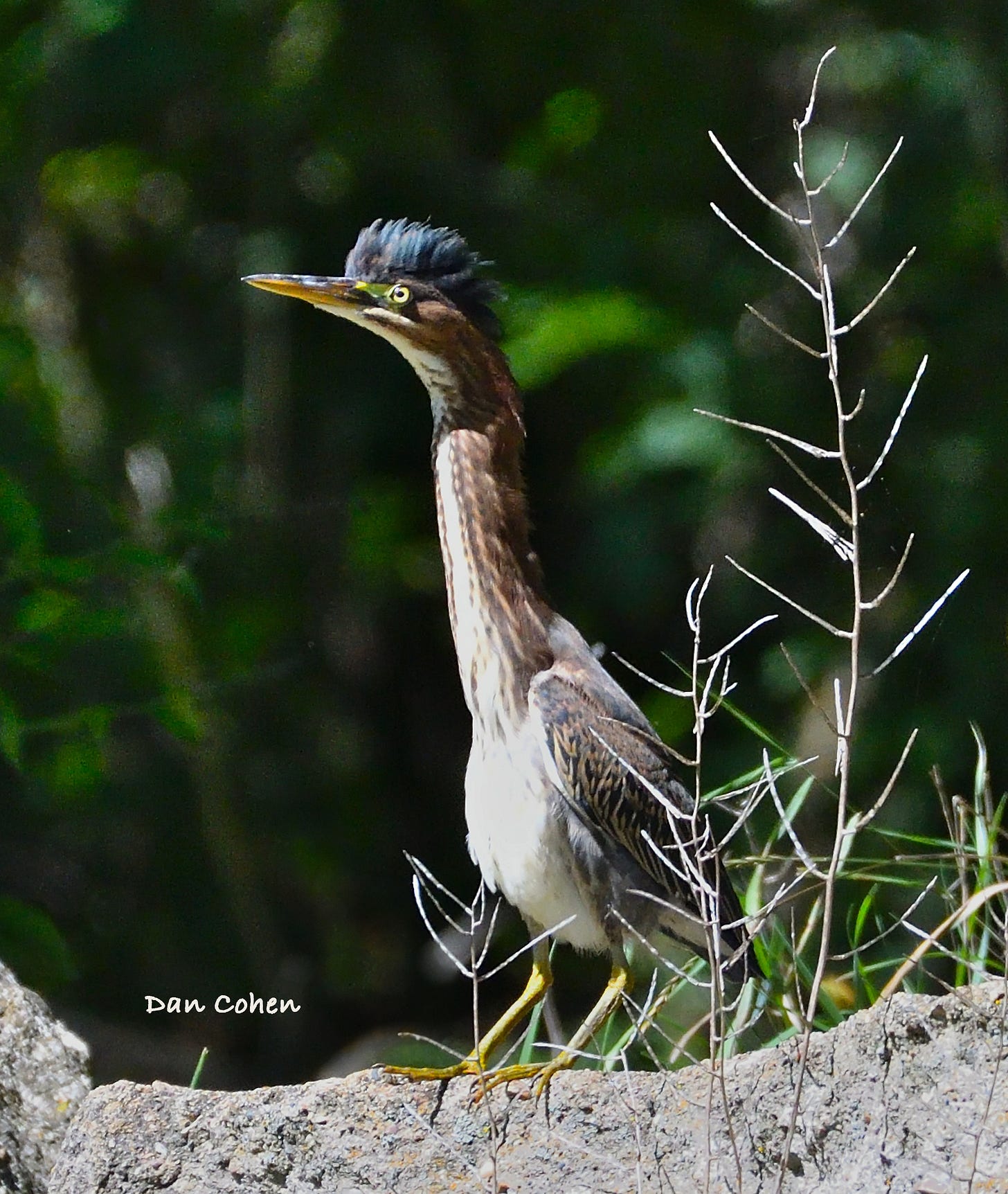
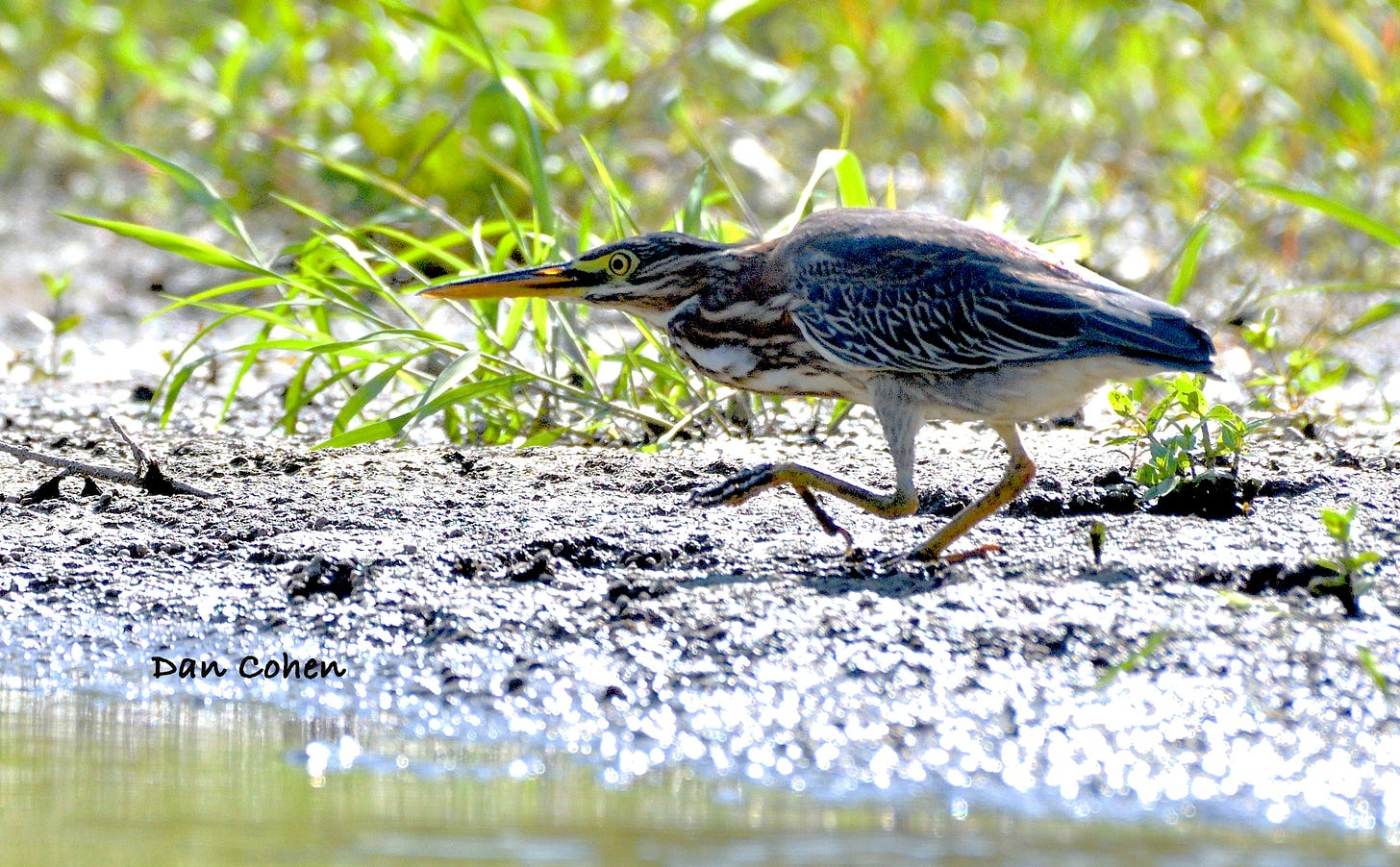
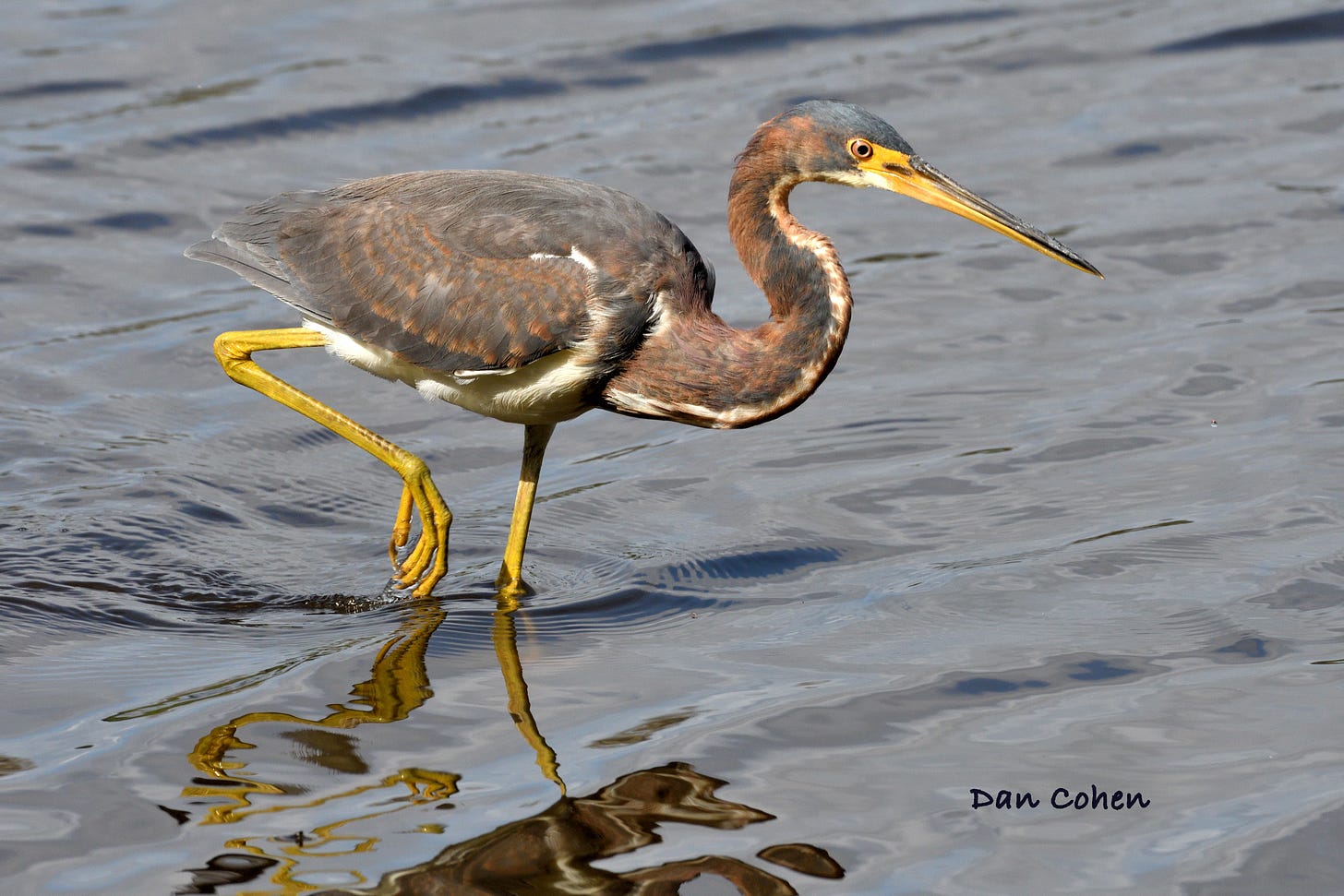
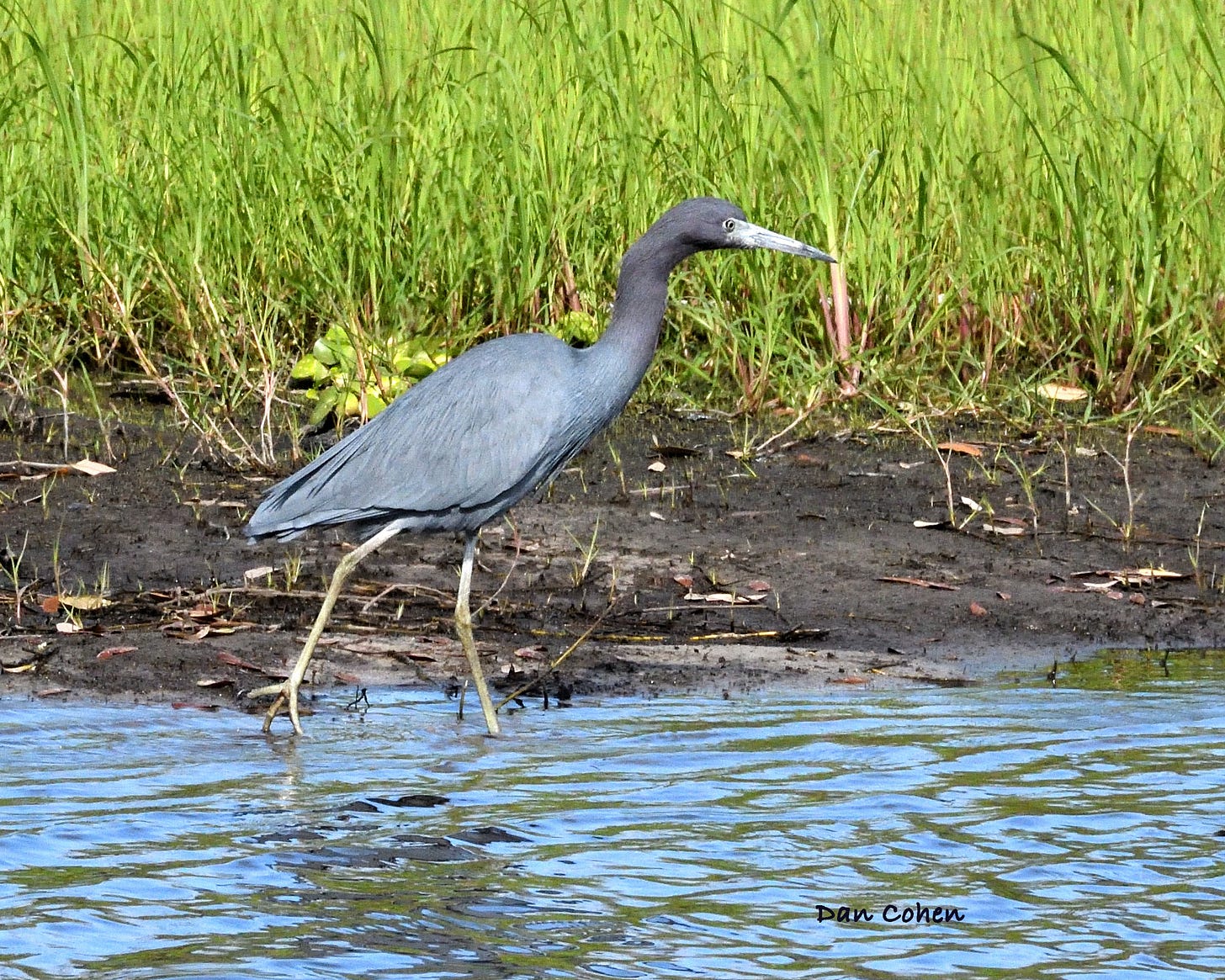
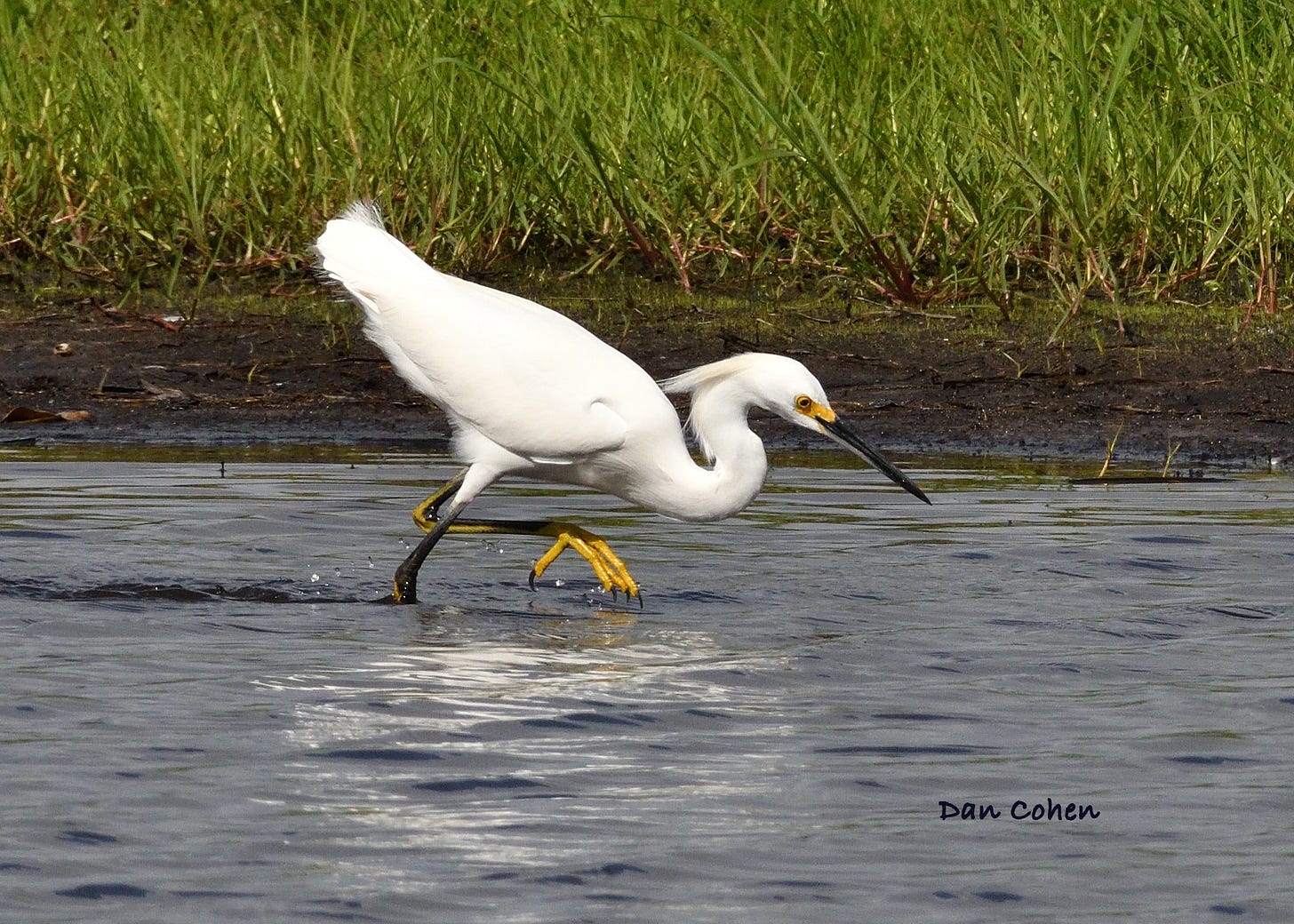

Hi Dan! Max Grover was my dad. Just discovered your substack & loved this article about my favorite bird. I think of them as river guardians when I'm kayaking. Always fun to see how close u can get before they reluctantly depart around the next bend...where the action is repeated 15 min later!
Loved this article on GBH!! You’re a great writer!!